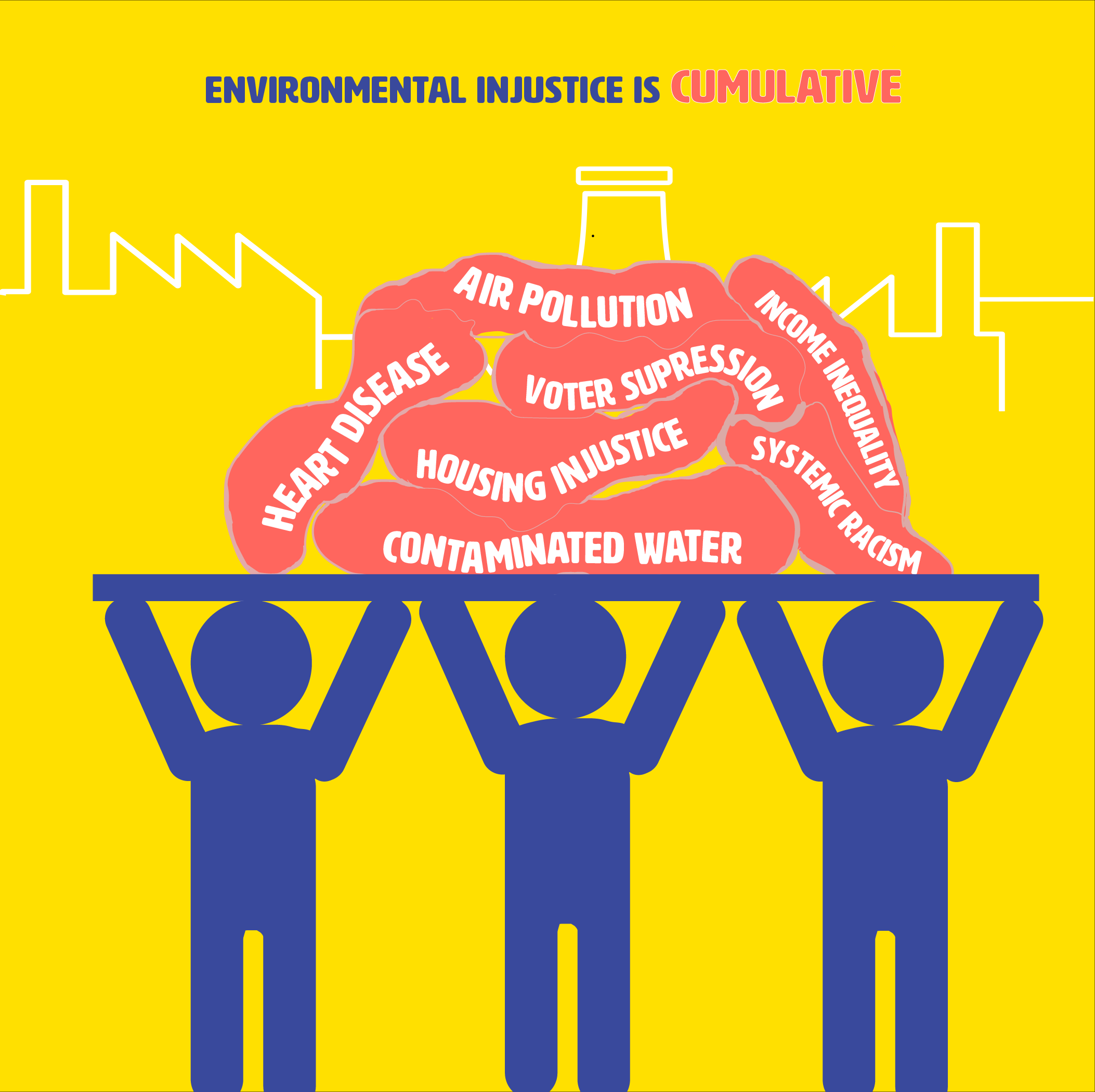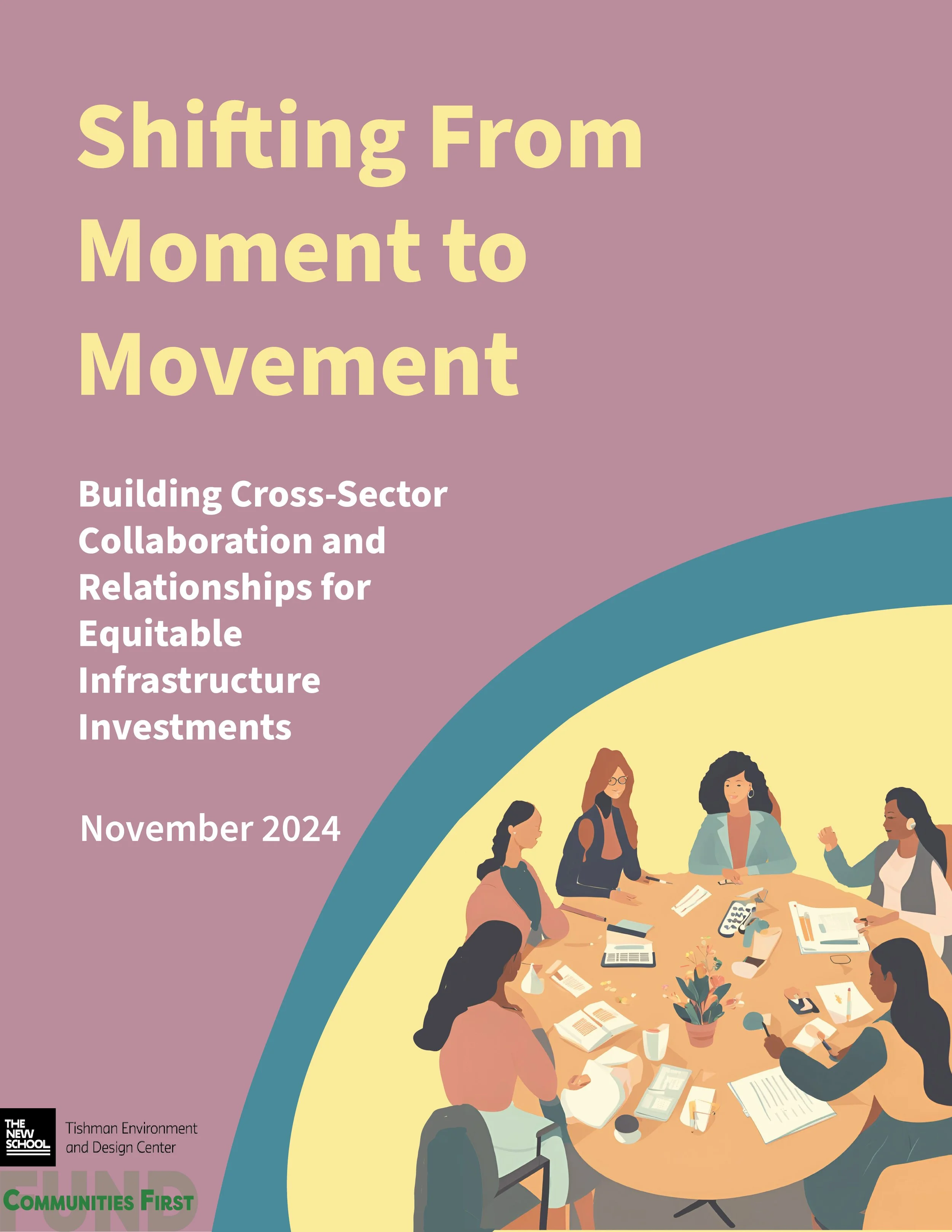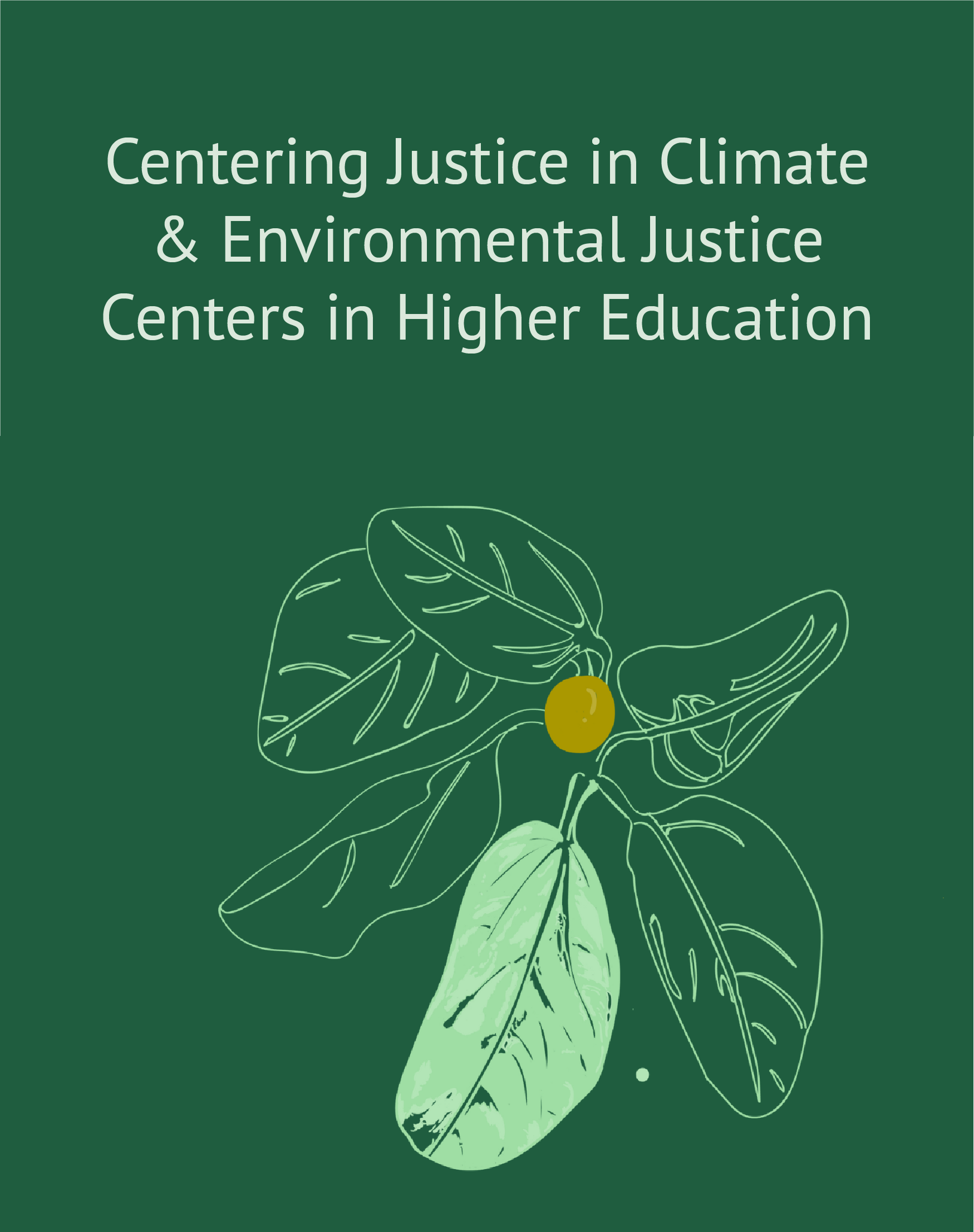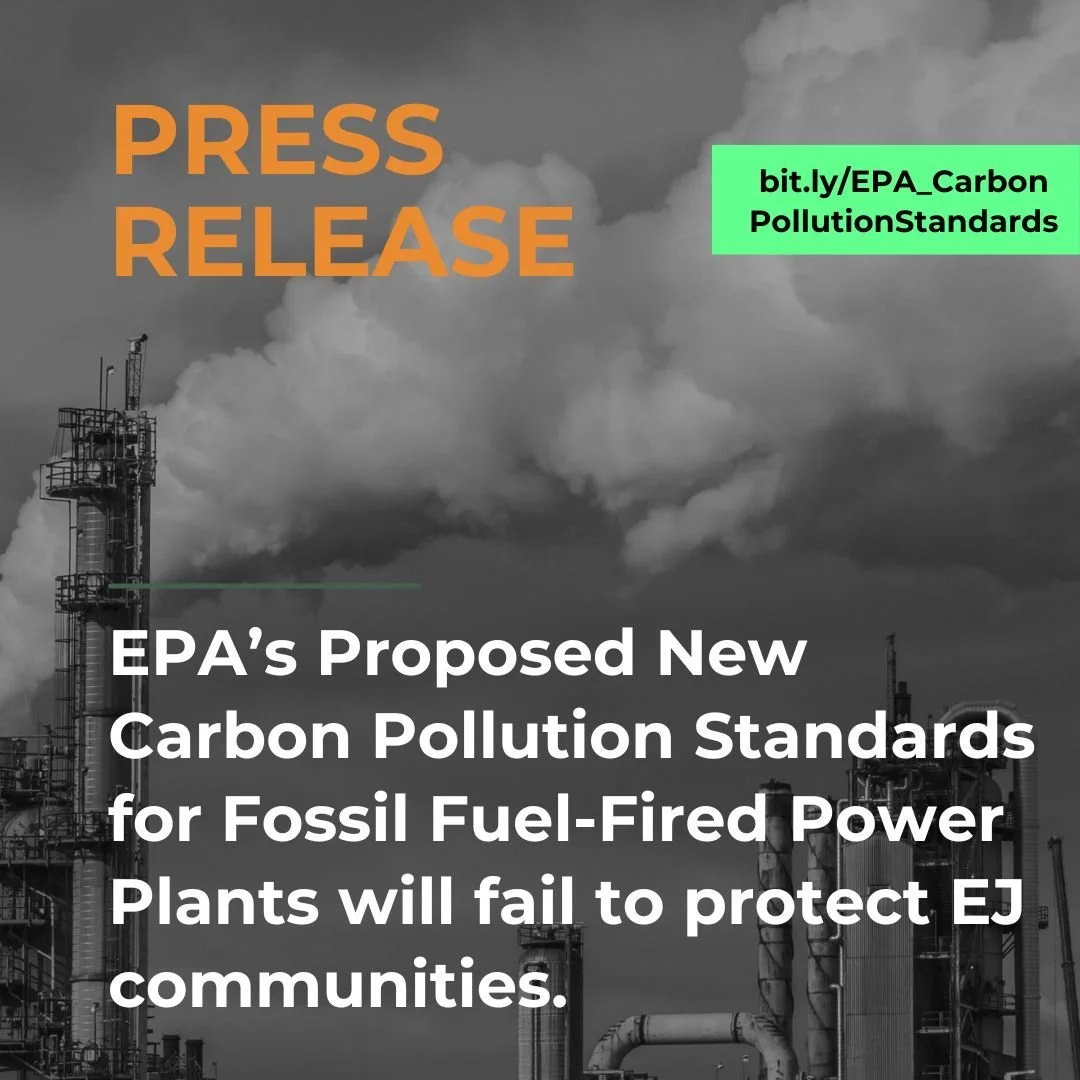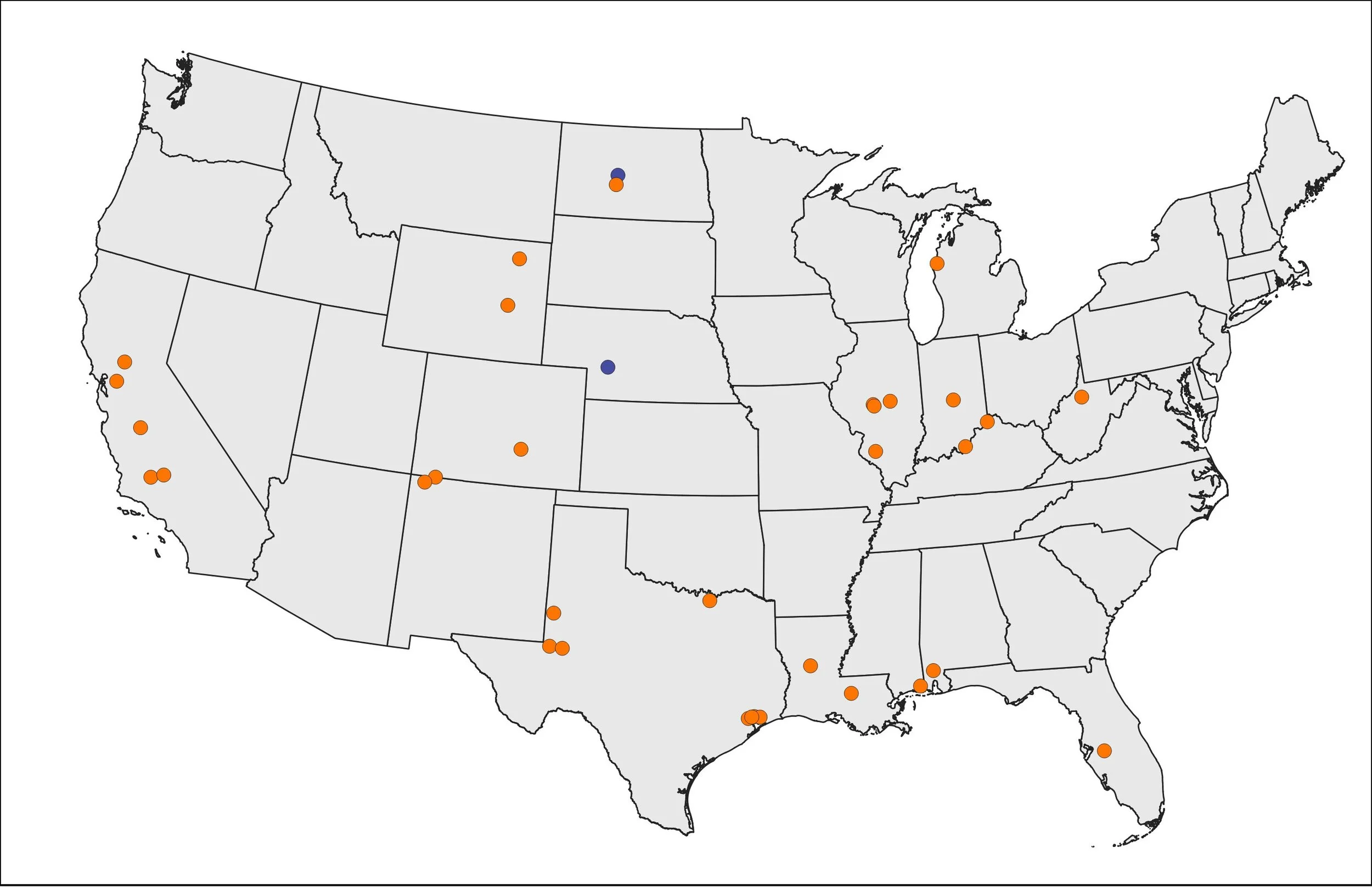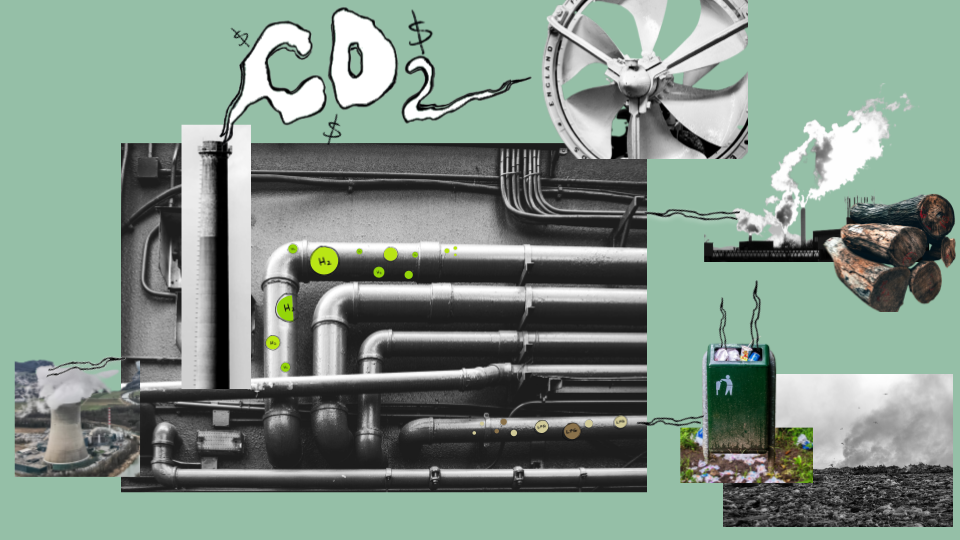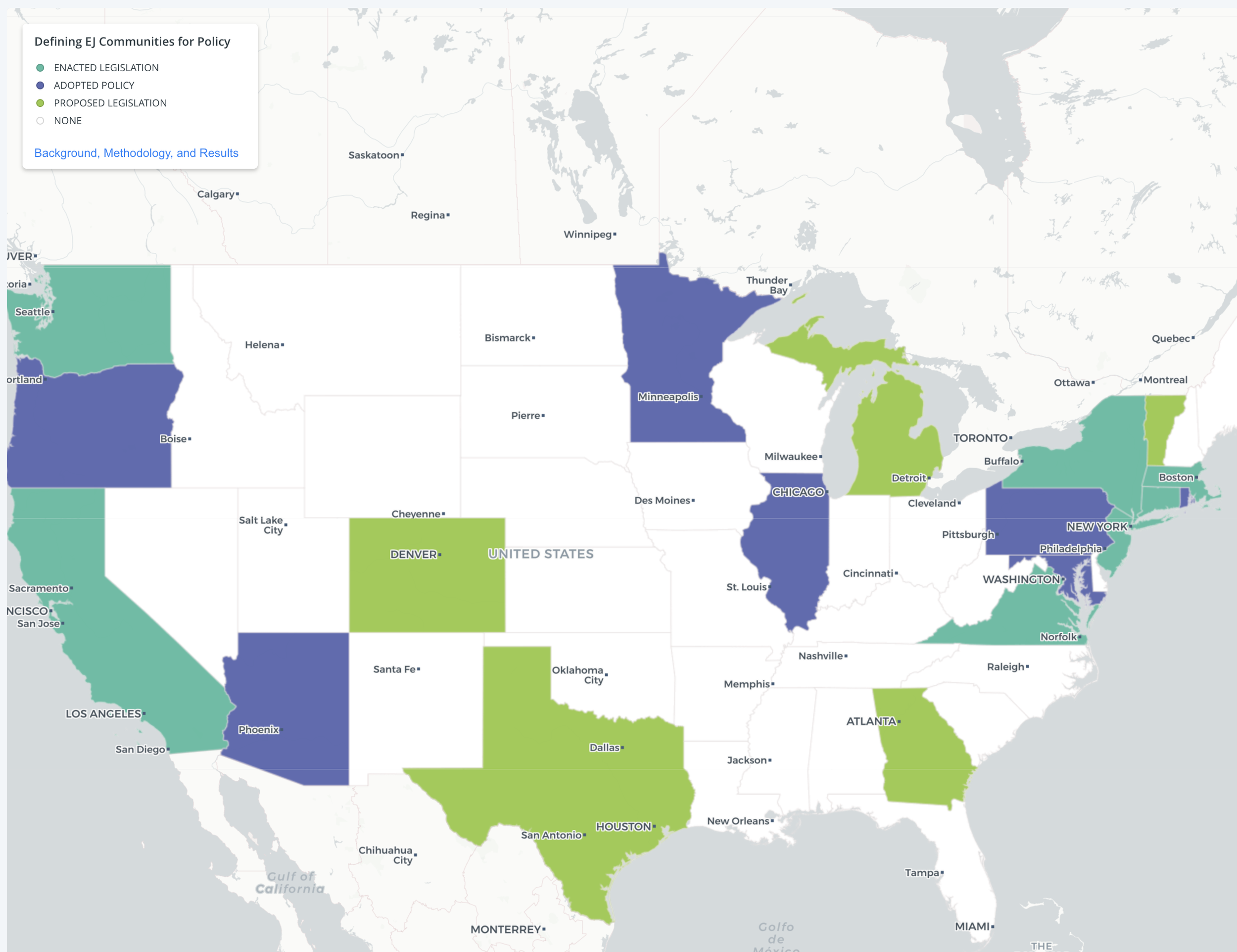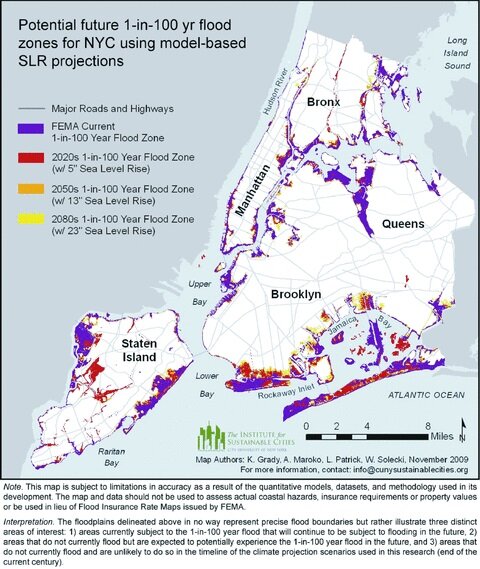Projects and Publications
Tishman Center Cumulative Impacts Hub
Environmental Justice (EJ) communities have long faced multiple environmental, social, and public health stressors that stack up over time. These cumulative impacts (CI) deepen inequities and increase risks to health and well-being. EJ leaders have long called for laws that recognize these realities, driving progress in defining, measuring, and addressing CI. Cross-sector advocacy efforts have sparked growing momentum across the country to put CI at the center of public decision-making. A breakthrough came in 2020, when New Jersey became the first state to deny permits based on CI. This landmark win, led by community advocacy, has inspired similar policies across the country.
For the past six years, we have tracked and analyzed the development of CI policies to support EJ advocates. Our State Cumulative Impacts Permitting Policies 2.0 Database (see hub below) brings together select bills, laws, mapping tools, and other policy instruments in one place. Updated twice a year, it highlights emerging trends in CI permitting policies. Putting cumulative impacts at the center of decision-making ensures frontline communities are protected from compounded harms. This hub is designed to be a resource for advocates, researchers, and policymakers advancing that vision. We also offer additional technical assistance to support this work.
Voicing the Power of Climate Justice
Many foundations are directing resources toward climate-related initiatives as the climate crisis intensifies globally. However, environmental justice (EJ) and climate justice (CJ) organizations remain among the least funded in environmental philanthropy, with most resources directed to large, mainstream organizations that often promote business-as-usual solutions that overlook the frontline communities most impacted by climate change. Past studies cite several reasons for this funding disparity—including ideological divides, racism, and elitism—but many funders also see grassroots organizations as too small or risky to scale climate action.
As part of a broader research effort with the Climate Justice Alliance (CJA) and the National Committee for Responsive Philanthropy, called the Just Returns Project, the Tishman Environment and Design Center conducted a mixed-methods investigation of the impact and scale of grassroots climate action. Through surveys and interviews with 44 CJA member groups and a review of the websites of the 48 Our Power Communities (OPC) CJA members, this study aimed to develop a grassroots-informed evaluative framework of impact and scale that aligns with the intersectional work of CJ organizations.
Climate Justice Futures: Carbon Management Risks and Alternatives
Together with our partners at the Center for Earth, Energy and Democracy (CEED), NJ Environmental Justice Alliance, and Kean University, the Tishman Center explores the rise of carbon management approaches like carbon capture and storage and the ways they are promoted in industry, science, and government, in a new peer-reviewed paper in the Journal of Climate Resilience and Climate Justice. The paper, "Climate Justice Futures: Carbon Management Risks and Alternatives," opens a special issue on critical environmental justice perspectives on carbon management, guest edited by Tishman Center director, Dr. Ana Baptista.
This report is part of a study documenting two years of Community First Fund (CFF)
organizing efforts. CFF mobilized resources and collaborated with government,
philanthropy, and investment leaders to leverage support to disadvantaged communities mandated by the Biden administration’s Justice40 Executive Order. This research report describes CFF’s pioneering approach to fostering cross-sector collaboration and relationship building to enhance accessibility and equity for disadvantaged, environmental justice communities in federal infrastructure investments.
The “Centering Justice” Symposium: A Call to Climate and Environmental Justice Centers Within Higher Education
The past decade has seen a proliferation of university-based centers with a stated focus on environmental justice (EJ) or climate justice (CJ). In January 2024, the Tishman Center hosted the Centering Justice Symposium to explore how the rapid uptake of EJ and CJ missions at university centers, together with funding opportunities, was shaping the relationship between higher education and the EJ and CJ movements. The symposium addressed grounding principles, opportunities, and challenges that accompany this emergent interest and explored ways to foster equitable partnerships with communities.
This article documents the organizing process of the symposium, its takeaways, and its outcomes, which include a Centering Justice Manifesto to disseminate and act on shared commitments and a burgeoning interest in developing a Community of Practice of like-minded centers. (For more on the Tishman Center's on-going Centering Justice work, see our Centering Justice page.)
Equity Analysis of Delaware’s Green Energy Fund
This project investigates the distribution of rebates given out for residential solar installation by Delmarva Power in Newcastle County, Delaware. The analysis helps to surface equity concerns around how a clean energy transition happens.
Environmental Justice Concerns with Carbon Capture and Hydrogen Co-Firing in the Power Sector
Current climate mitigation policies for the power sector are increasingly focused on technological approaches to “manage” carbon emissions, two prime examples being the deployment of technological carbon capture and storage/sequestration (CCS) and the burning of hydrogen-blended natural gas fuel. These carbon management approaches can have serious environmental justice implications. This white paper provides a summary of evidence demonstrating the threats posed by CCS and hydrogen co-firing to environmental justice communities in the United States. In synthesizing the best available data on equity, public health, and environmental risks, we find that the potential harm to communities already burdened by pollution warrants reconsideration of our investments and policies to promote carbon management. This caution is further underscored by the poor track record and questionable mitigation potential of these technologies.
This report was prepared in partnership with the Center for the Urban Environment of the John S. Watson Institute for Urban Policy and Research at Kean University, the New Jersey Environmental Justice Alliance, and the Center for Earth, Energy, and Democracy.
The community-friendly infographic illustrates this research, showing how CCS can harm EJ communities at every stage, from capture to transport to storage, and why it falls short as a solution to cut carbon emissions.
Environmental Justice Groups Provide Key Feedback on EPA Greenhouse Gas Guidelines for Existing Gas Plants
The Tishman Environment and Design Center at The New School, the Center for the Urban Environment of the John S. Watson Institute for Urban Policy and Research at Kean University, the New Jersey Environmental Justice Alliance, the Center for Earth, Energy, and Democracy, WE ACT for Environmental Justice, and the Deep South Center for Environmental Justice, along with the 23 co-signed environmental justice (EJ) organizations and alliances and 15 co-signed allied organizations and coalitions, submit the following comments in reference to EPA’s Existing Stationary Combustion Turbine EGUs Framing Questions for Stakeholder Input.
Our organizations submitted comments last year on EPA’s proposed New Source Performance Standards for Greenhouse Gas Emissions From New, Modified, and Reconstructed Fossil Fuel-Fired Electric Generating Units; Emissions Guidelines for Greenhouse Gas Emissions From Existing Fossil Fuel-Fired Electric Generating Units; and Repeal of the Affordable Clean Energy Rule.
Our Concerns on Tax Credits for "Clean Hydrogen"
The Tishman Environment and Design Center, along with the New Jersey Environmental Justice Alliance, the Center for Earth, Energy and Democracy, and the Center for the Urban Environment of the John S. Watson Institute for Urban Policy and Research at Kean University, voice concerns about the Biden-Harris administration’s plan to provide tax credits for hydrogen production under Section 45(v) of the Internal Revenue Code.
The Proposed 45(v) rule, under which billions of dollars would be provided for “clean hydrogen,” fails to address or even contemplate critical environmental justice issues. Our organizations urge the Department of Treasury to maintain the strictest guidelines possible to prevent further risks to environmental justice communities and public health.
Climate mitigation policies are among the most urgent and politically viable pathways to realize EJ gains in the form of co-pollutant mitigation. There are a variety of climate mitigation policies in place across the country and while these climate policies seek to reduce GHG emissions, they rarely, if ever, target or track the location-specific reduction of GHG emissions, and they neglect co-pollutants or simply assume that a concomitant reduction in co-pollutants will occur. A just and equitable climate mitigation policy, makes the elimination of the sector’s outsized and inequitable impact on low-income communities and communities of color an explicit goal. From an environmental justice perspective, climate change mitigation measures, whether they use a technology-based standard, a greenhouse gas (GHG) target, or a market-based or other mechanism, should explicitly incorporate mandatory emissions reductions (MER) of health-harming co-pollutants in EJ communities.
A new report by Nicky Sheats and the Tishman Environment and Design Center in collaboration with New Jersey Environmental Justice Alliance, Environmental Justice Health Alliance for Chemical Policy Reform, and Center for Earth Energy and Democracy, lays out the justification and framework for an MER policy in the U.S. power sector. Read the report now!
Report updated October 2023
Critique of EPA Greenhouse Gas Rule
The Tishman Center helped co-author comments on the EPA’s proposed New Source Performance Standards for Greenhouse Gas Emissions From New, Modified, and Reconstructed Fossil Fuel–Fired Electric Generating Units; Emissions Guidelines for Greenhouse Gas Emissions From Existing Fossil Fuel–Fired Electric Generating Units; and Repeal of the Affordable Clean Energy Rule. The unique contribution of these comments lies in its focus on analyzing the environmental justice implications of the EPA’s proposal to use carbon capture and hydrogen co-firing as the technological standard for new and existing power plants. The comments highlighted critical gaps in the EPA’s EJ analysis, including the failure to characterize the health impacts of co-pollutant emissions from these technologies or the contribution of these emissions to cumulative impacts. These comments were developed with the NJ Environmental Justice Alliance, the Center for Earth, Energy and Democracy, and Dr. Nicky Sheats of the John S. Watson Institute for Urban Policy and Research at Kean University. Eighteen EJ organizations and nine allied organizations co-signed and submitted the comments on August 8, 2023, and presented at a joint press conference with other national environmental justice leaders.
Analysis of Potential Carbon Capture in the US Power Sector and
Co-Location with Environmental Justice Communities
Carbon capture and storage (CCS) or carbon capture, utilization, and storage (CCUS) refers to processes where CO2 is captured and separated at the point of combustion and transported for use or storage. Proponents of CCS maintain that it can be used to abate the CO2 emissions of the power sector when built at a coal-fired and natural gas power plant or in association with the fossil fuel-based production of hydrogen as an alternative fuel source. However, representatives of environmental justice (EJ) communities–low-income communities and communities of color who live near polluting infrastructure, including fossil fuel-fired power plants–have voiced deep concerns about the impacts of impending carbon capture operations in their areas and how such impacts will compound the social and environmental burdens they already face. There has been a lack of adequate environmental justice analysis of the potential CCS buildout in the power sector. The results of these papers are an illustration of just how feasible and important it is to conduct an analysis of the co-location of potential CCS facilities in EJ communities.
False Solutions for Just Climate Mitigation and Clean Energy Policies: Case studies of New Jersey, Delaware, and Minnesota
Environmental and climate justice advocates have classified several economy-wide or sector-specific climate mitigation approaches and specific fuels or energy sources as false solutions. EJ and climate justice advocates’ central critique of these systems is their inability to achieve equitable outcomes, but also their failure to fundamentally alter the control and commodification of energy systems by powerful industry elites. To better understand and contest false solutions, this paper provides a snapshot of false solutions currently enacted or proposed in three case studies focused on New Jersey, Delaware, and Minnesota. These three state case studies can provide insight into both already entrenched and emerging false solution approaches in policy that EJ advocates have had to respond to across the country.
U.S. MSW Incinerators: An Industry in Decline
The vast majority (85%) of municipal solid waste incinerators in the US are located in Environmental Justice Communities. 4.5 million people live within a three-mile radius of an incinerator. Most of the MSW incinerators in operation today were built in the 1980s yet the average life expectancy is 30 years. These aging facilities are dangerous to human health and the planet, releasing health harming air pollutants, such as particulate matter, dioxins, lead and mercury, as well as carbon dioxide, negatively contributing to climate change. Environmental Justice Communities with incinerators in their neighborhoods have spent decades working to close these aging facilities down. As states around the country expand environmental and climate policies to ensure more equitable outcomes, it is imperative that closure of incinerators become a central policy to advance.
With the guidance and direction of our partner GAIA, the Tishman Center has developed a comprehensive body of work dedicated to an analysis of incinerators and their negative impacts on environmental justice communities and the health of our planet.
Defining Environmental Justice Communities for Policy
Last updated April 2021
As the associated problems of environmental racism, and cumulative impacts are increasingly understood and taken up by policy makers, there is a growing need to codify the terms implied by such policies. Definitions are important for policymaking because they help clarify problems and interventions. One of the critical components of an effective Environmental Justice (EJ) policy is the definition of an EJ community - the people and places that are the subject of EJ policies. A number of states, municipalities and federal policies have developed definitions and tools to identify EJ communities using socio-demographic, public health, environmental and other indices.
The EJ Communities Definition chart summarizes state and municipal definitions of environmental justice communities codified in legislation or promulgated in agency policies. This search does not represent an exhaustive list of all possible definitions in use today or previously proposed. It is meant to serve as a tool for policymakers and EJ activists. Please see the summary here.
White House Environmental Justice Advisory Council (WHEJAC) Recommendations
During the tenure of the White House Environmental Justice Advisory Council, established under the Biden-Harris administration, two members of the Tishman Center served as external experts on the working groups tasked with providing recommendations on Carbon Management and the administration’s Environmental Justice Scorecard. Our contributions helped inform the first and second set of Carbon Management recommendations in November 2023 and October 2024, and the December 2023 recommendations on the EJ Scorecard.
Justice40 Recommendations
The Equitable and Just National Climate Forum, the New School’s Tishman Environment and Design Center, and the Center for American Progress convened environmental justice (EJ) advocates and academic experts and national environmental groups on December 2, 2020, and January 27, 2021, to identify actions that the Biden administration should take to effectively implement the goal of targeting 40 percent of the overall climate investment benefit to disadvantaged communities. President Joe Biden’s January 27 executive order (EO) 14008 on climate change created the White House and agency infrastructure to implement this goal, referred to as Justice40 in the EO.
As part of the Equitable and Just National Climate Platform, the Tishman Center helped to develop an online searchable database of federal funding related to the the Justice40 Initiative. The tool includes funding opportunities and funding amounts, eligibility, deadlines, and other important information for Justice40 covered federal programs. Please find a link to this tool below.
New York City Panel on Climate Change
New York faces severe challenges posed by climate change including dangerous heat waves and flooding from sea-level rise. The New York City Panel on Climate Change (NPCC), founded in 2009, is an independent group that assesses climate and environmental risks to NYC and recommends changes in an advisory report, much like the United Nations’ Intergovernmental Panel on Climate Change (IPCC) .
For over a decade now, the city’s leaders have worked to build resilience and adaptation plans and have invested in preparing our infrastructure to address these issues, however there is much more that needs to be done especially in regards to equitable planning that prioritizes communities with the greatest risks and legacies of environmental injustice. For the next report, two members of the Tishman Center will be included in the panel for the NPCC 2023 report: Professor Joel Towers and Dr. Ana Baptista. They are joined by New School colleague Dr. Timon McPhearson. Read more here.
Image: New York City Panel on Climate Change
Environmental Justice and Philanthropy: Challenges and Opportunities for Alignment
Across the country, environmental justice (EJ) organizations and communities of color are leading influential campaigns and initiatives aimed at protecting public health, developing stronger climate and environmental policies, and building new economies rooted in Just Transition principles. However, the power and scale of grassroots environmental justice organizations are often misunderstood or overlooked by philanthropy, despite a long record of community organizing and action. As a result, funding disparities persist, and the most important voices acting on behalf of equitably adapting to and mitigating climate change and environmental degradation are often excluded from critical decision-making processes.
This study of the underlying dynamics of misalignment between the philanthropic and environmental justice sectors in the Midwest and Gulf South regions confirms that environmental funders are largely granting to mainstream environmental organizations (99%), with just a tiny fraction (1 percent) going to environmental justice organizations. While it is clear there are barriers to alignment between philanthropy and the EJ sector, it is equally clear that there are significant areas of opportunity.
EJ Movement Landscape Assessment: Priorities, Strategies & Just Transition
In 2018, the NorthLight Foundation invited The New School to explore leadership program models that could be well suited to support the EJ movement.
As a part of this process, we conducted a needs assessment of the EJ movement. The assessment was designed to evaluate the priority issues and strategies prevalent among EJ movement organizations, the greatest challenges facing them, the transformational campaigns animating the movement currently, and the expressed needs and desires of movement leaders in relation to a future leadership program housed at The New School. The report summarizes and highlights key findings of the landscape assessment and describes the proposed program.
In light of this, the Tishman Center is excited to announce the creation of a new Environmental Justice (EJ) Movement Fellowship to be housed at The New School.
Local Land Use Policy for Environmental Justice
Along with NRDC and commissioned by The Chicago Environmental Justice Network, which includes LVEJO, Southeast Environmental Task Force, Southeast Side Coalition to Ban Petcoke, People for Community Recovery, lxchel and Blacks in Green.
The national scan compiles 40 policies from over 20 cities, three counties and two utility service areas across the U.S., categorizing the policies into six groups:
1. Bans on specific types of polluting facilities typically sited in environmental justice communities
2. Broad environmental justice policies that incorporate environmental justice goals and considerations into a range of municipal activities
3. Environmental review processes applied to new or expanded developments
4. Proactive planning targeted at future development to address environmental justice via comprehensive plans, overlay zones, or green zones
5. Targeted land use measures that address existing sources of pollution, like amortization policies
6. Enhanced public health codes that reach both existing and new sources of pollution that impact public health
Equity Implications of the Clean Power Plan
In 2015, the Tishman Center partnered with environmental justice scholars Dr. Cecilia Martinez from the Center for Earth, Energy and Democracy, and Dr. Nicky Sheats from Thomas Edison State University and New Jersey Environmental Justice Alliance, to evaluate the justice implications of the Clean Power Plan. The Center hosted public panels to discuss some of the primary environmental justice concerns arising from an evaluation of the policy. Three white papers were produced which take an in-depth look at a variety of issues including: emissions reductions at the source from power plants in environmental justice communities, potential EJ impacts from carbon trading, challenges related to clean energy opportunities, incentives for dirty energy, loopholes for incentivizing waste burning and the history of the EJ movement’s engagement in climate policies. Read the papers below:
Design Justice and Zero Waste Conference
The Tishman Center and GAIA (Global Alliance for Incinerator Alternatives) hosted the conference Design, Justice & Zero Waste: Exploring Pathways to a Circular Economy May 8-9, 2018. To read more about the conference and research collaborative, click the button below.
The Gulf Coast Fund was created to resource, connect, and amplify the work of grassroots, community-based organizations from the most vulnerable communities and ecosystems. The Fund was led by an Advisory Group made up of community leaders engaged in work that addressed not only the effects of natural and human-made disasters in the region, but in social and environmental justice efforts that strengthened civil society in order to address the underlying inequality and ecological destruction that led to the severity of disasters in the Gulf Coast.


